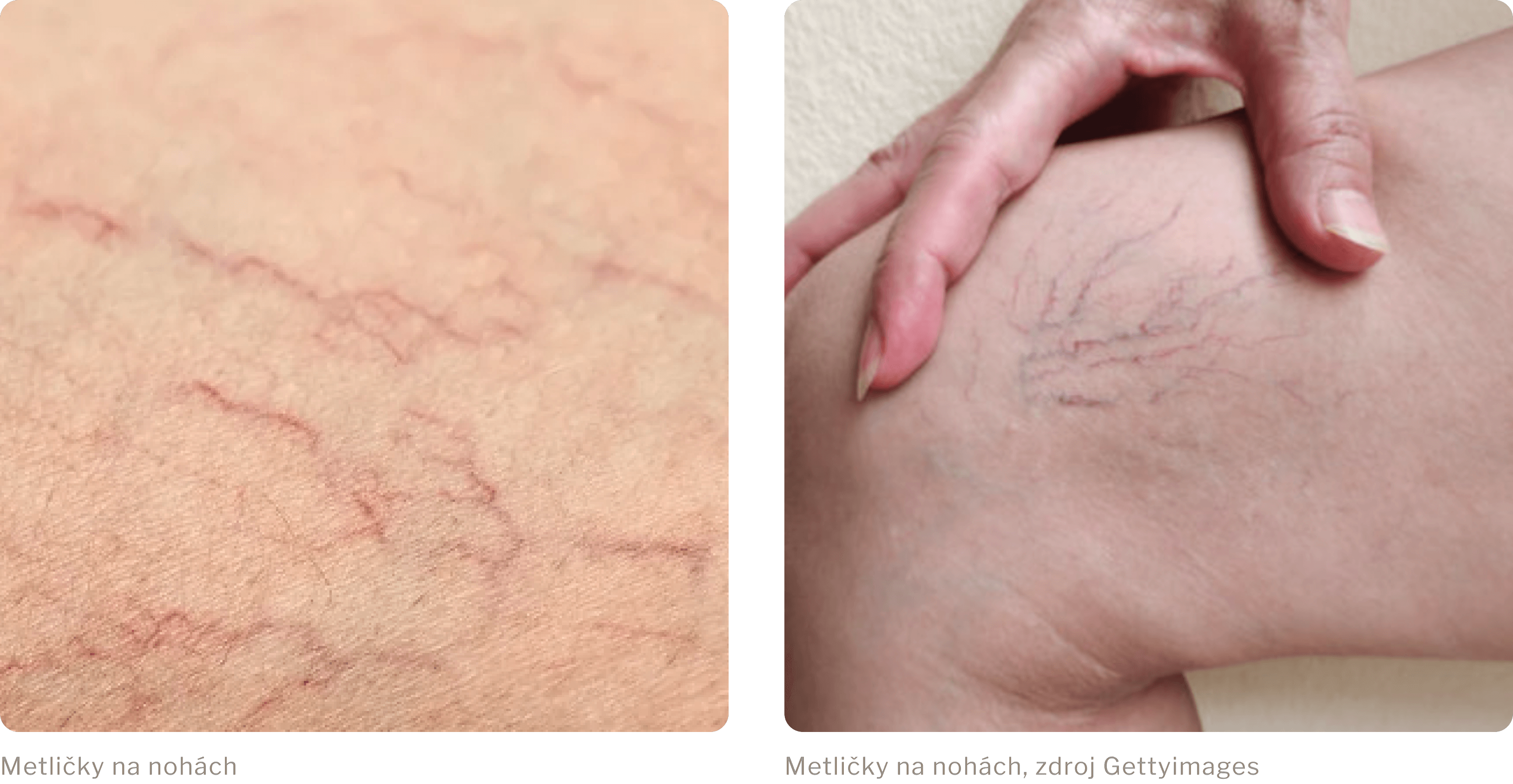Spider veins are also known as telangiectasia, venectasia, or thread veins. Spider veins are small, dilated blood vessels near the surface of the skin that often occur in areas such as the legs and calves. They can be red, blue or purple in colour. Spider veins represent C1 stage of the chronic venous disease, where the pressure in the superficial small veins is increased, causing inflammation and dilatation of the veins. Therefore, visible changes appear on the surface of the skin, such as tiny veins, later purple skin spots, inflammations, eczema and pigmentation. They are not only a cosmetic problem but also C1 stage of chronic venous disease and, therefore, they should be treated in a complex manner. Treatment of chronic venous disease by wearing compression stockings (thigh, lower leg); by reducing intravenous inflammation by taking micronised diosmine-based venotonics; and by attending annual follow-ups to assess the progression of the spider veins and the chronic venous disease itself, and to determine if removal of the spider veins by microsclerotisation, laser is indicated.

Since spider veins are the C1 stage of chronic venous disease, the probability of their recurrence is high and we try to eliminate it during regular annual vascular follow-ups.
Treatment options include foam or solution-assisted sclerotisation, ultrasound-assisted, laser and radiofrequency ablation, and also traditional microstripping surgery according to Varady.

Chronic venous disease (CVD) is characterised by the appearance of varicose veins in the lower limbs with the following symptoms
Read the article
Zátišie 5, 831 03 Bratislava
recepcia@proktovena.sk +421 911 700 374Medichir s. r. o.

Monday
8:00 — 15:30
Tuesday
8:00 — 15:30
Wednesday
8:00 — 17:00
Thursday
8:00 — 15:30
Friday
8:00 — 12:00
Zátišie 5, 831 03 Bratislava
Free parking is available for 3 hours at the Vivo shopping centre. Parking on the surrounding streets is also free of charge. Parking on pavements is prohibited.
Enter your email to receive our regular newsletters.